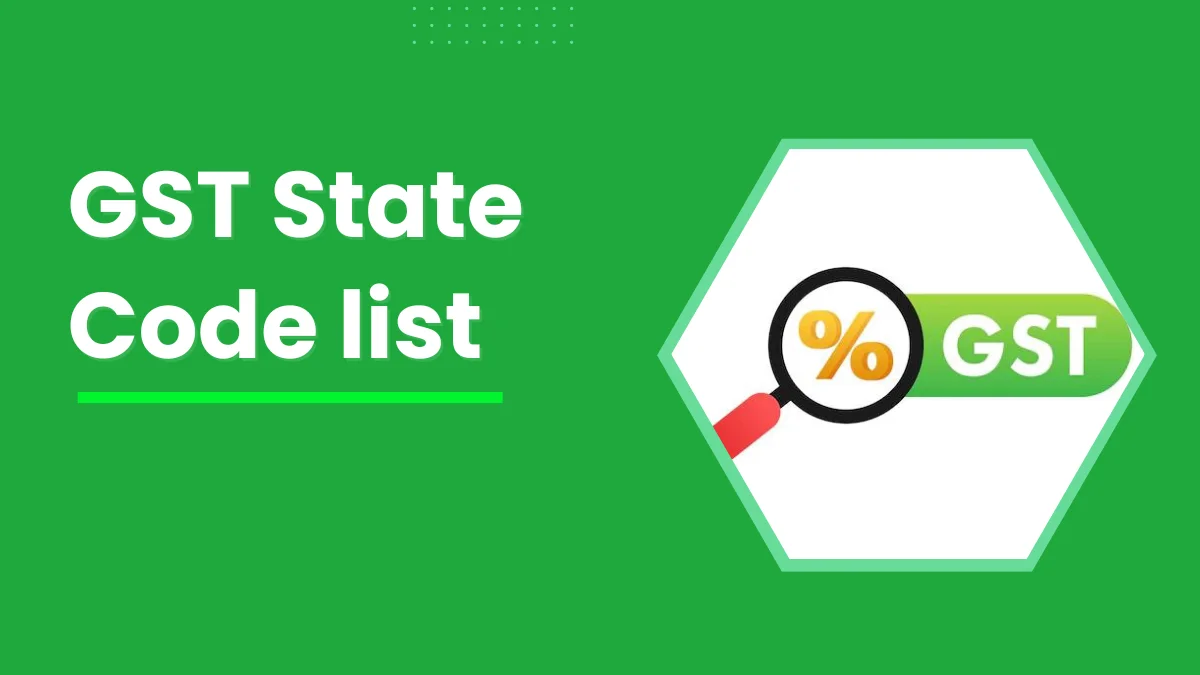Small and medium-sized businesses are primary growth drivers of the Indian economy. Thus, business owners are always anxious about the complex tax filing system.
One of the significant tax innovations that contributed to the abolition of various tax systems was the Goods and Services Tax (GST) implementation. As small and medium enterprises were included in applying GST, the country witnessed many changes, and the tax base expanded.
However, due to how this tax change could affect compliance processes, most small company owners were concerned and were looking for solutions. But in this article, you will have a detailed view of the positive impact of GST, GSTIN, GST State Codes‘ importance, and more.
Article Content-
- Impact of GST Implementation
- What is GST Identification Number (GSTIN)
- What is the Format of GSTIN?
- Why Was GST State Code List Introduced?
- Where do we need State Code in GST?
- GST State Code List
- How Can SWIL Help you?
- FAQs
- Conclusion
Impact of GST Implementation
It offers ease in registration. Previously tax system was complex, and businesses needed to follow various tax rules. With the introduction of GST, the registration process is now online and centralized, making it simple for SMEs to complete. Entrepreneurs may immediately start businesses and form a company through a streamlined GST process because VAT registration is not necessary.
GST offers simpler taxation with enhanced compliance. It has eliminated all cascading taxes, making the entire taxing process easier with a lower tax burden, so SMEs are no longer required to cope with the various taxation system. For small and medium-sized businesses, tax compliance is mow improved and simple.
It offers hassle-free logistics. There is no longer an entrance tax on goods sold within the country due to the establishment of the GST. It will improve the movement of goods throughout India and result in simple logistics for the commodities produced by small businesses, lowering the logistics cost.
It gives easy access to the whole nation market. Commodities and services will be considered equal, making it straightforward for companies to participate in the one national market without concentrating on handling their state-by-state taxes. Due to the more accessible and more flexible compliance requirements of the GST, small businesses may see a rapid expansion of their activities.
Now the question is, where do we need state code in GST?
To get the answer of the above question, in GST, state code is used in GST Identification Number (GSTIN). Let’s know more detail about it and state code GST list.
What is GST Identification Number (GSTIN)
When Taxpayers/businesses completed their GST registration, they most likely received a 15-digit GSTIN or provisional ID. Understanding your GSTIN’s structure is crucial since it will enable you to check whether your supplier has used the right GSTIN in their invoices.
What is the Format of GSTIN?
The Goods and Services Tax Identification Number (GSTIN) is the number that appears on the registration certificate (GSTIN). Your GSTIN’s 15 digits are as follows:
- Two digits signifying the state code
- Ten digit PAN number
- One digit signifying the number of registrations
- Two digits having the default and checksum values
Why Was GST State Code List Introduced?
To minimize the possibility of errors while writing state codes alphabetically, the list of GST state code was introduced.
Additionally, IRP won’t validate any e-invoice that contains inaccurate information. As a result, while inputting numerical numbers for invoices and GST Returns, short and simple codes prevent even the least possible error.
Where do we need State Code in GST?
It is needed for-
GST Registration Number (GSTIN)
The first two codes of the GSTIN consist of state codes for instance
GSTIN 11ABPPM0133T1Z9, here 11 is the state code of Sikkim.
Identifying Delivery Zone or “Place of Supply”
This way, it gives accurate information of “Delivery zone” or “place of supply”. IGST will be charged if the supplier state code and the “Place of Supply” country code are different, while CGST and SGST will be levied if the supplier state code and state of supply code are the same.
GST State Code List
Select the proper code for any state, union territory, or central jurisdiction from the full list of GST State Codes provided below:
| STATE NAME | STATE CODE |
|---|---|
| JAMMU AND KASHMIR | 1 |
| HIMACHAL PRADESH | 2 |
| PUNJAB | 3 |
| CHANDIGARH | 4 |
| UTTARAKHAND | 5 |
| HARYANA | 6 |
| DELHI | 7 |
| RAJASTHAN | 8 |
| UTTAR PRADESH | 9 |
| BIHAR | 10 |
| SIKKIM | 11 |
| ARUNACHAL PRADESH | 12 |
| NAGALAND | 13 |
| MANIPUR | 14 |
| MIZORAM | 15 |
| TRIPURA | 16 |
| MEGHALAYA | 17 |
| ASSAM | 18 |
| WEST BENGAL | 19 |
| JHARKHAND | 20 |
| ODISHA | 21 |
| CHATTISGARH | 22 |
| MADHYA PRADESH | 23 |
| GUJARAT | 24 |
| DADRA AND NAGAR HAVELI AND DAMAN AND DIU (NEWLY MERGED UT) | 26* |
| MAHARASHTRA | 27 |
| ANDHRA PRADESH(BEFORE DIVISION) | 28 |
| KARNATAKA | 29 |
| GOA | 30 |
| LAKSHADWEEP | 31 |
| KERALA | 32 |
| TAMIL NADU | 33 |
| PUDUCHERRY | 34 |
| ANDAMAN AND NICOBAR ISLANDS | 35 |
| TELANGANA | 36 |
| ANDHRA PRADESH (NEWLY ADDED) | 37 |
| LADAKH (NEWLY ADDED) | 38 |
| OTHER TERRITORY | 97 |
| CENTRE JURISDICTION | 99 |
How Can SWIL Help you?
SWIL is a leading software product development company that mainly deals with software for retailers and wholesalers. SWIL’s software products have exclusive accounting, inventory, payment, and GST handling features. These solutions automate most of your GST compliance while effortlessly integrating with all ERPs, and this gives business owners more comfort in GST filling.
FAQs
Do we have to register for GST in every state?
If a company has branches in multiple states, the taxpayer needs to register for the GST separately in each of those states.
What makes a GST number essential?
For business entities to take advantage of the various benefits offered by the state code list under GST system, GST registration is essential.
Which state has no GST in India?
All States Except Jammu and Kashmir Pass State GST Laws.
What is GST state?
The Central Government (CGST) and the State Governments (SGST) both impose a tax on transactions that take place inside a single state. The Central Government imposes an Integrated GST (IGST) on interstate transactions and imported goods and services.
How is the GST divided among the states?
According to the GST laws, the IGST must be distributed equally between the Center and the States, and the recommendations of the then-15th Finance Commission compel the Union Government to give an extra 42% of its portion to the States.
Why do states pay GST?
The Constitution (101st) Act of 2016 mandates in Section 18 that “on the recommendation of the GST Council, Parliament shall, by law, provide compensation to States for loss of revenue arising on account of implementation of the Goods and Services Tax for five years from the date of implementation.
Conclusion
GST has several positive effects for small and medium-sized businesses, including various benefits, ease of use, and digitized and streamlined operations. It helps prospective company owners swiftly begin their ventures and gives their ideas wings.
GST state code list plays a vital role in knowing whether the GSTIN mentioned is authenticated. It helps determine whether the invoice raised is fake or real and allows a taxpayer to evaluate the tax liability using the supplier’s code and place of supply code. To know more about it, kindly contact the SWIL team. The team helps you in the best possible way and helps you quickly grow your business.








